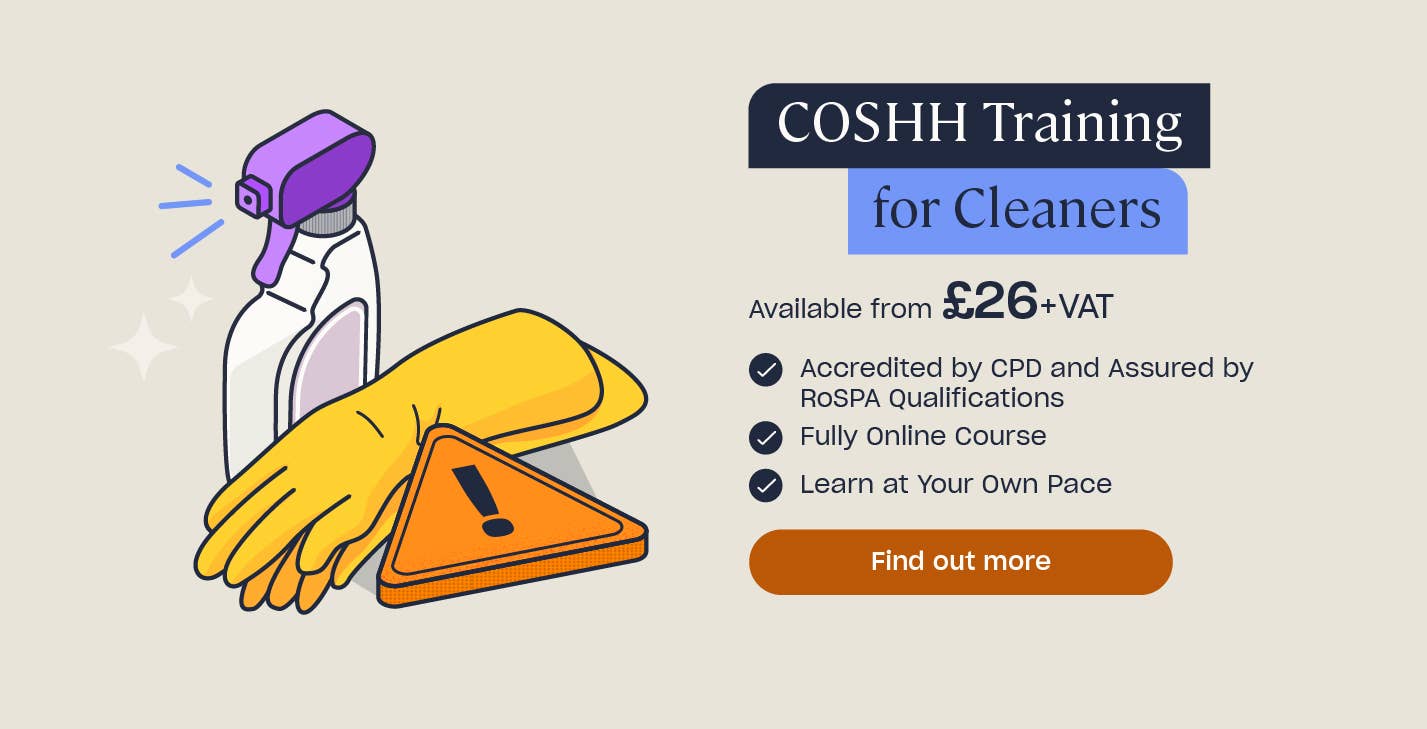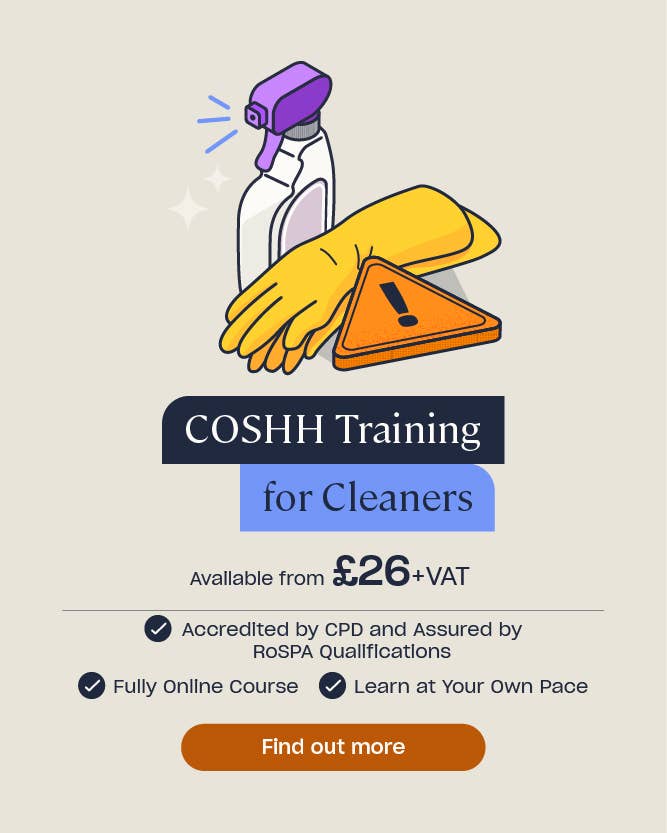What are High Touch Surfaces and How Should You Clean Them?
Cleaning certain types of surfaces more frequently than others is crucial for preventing the spread of harmful bacteria, infections and viruses, especially in workplaces where multiple people may contaminate surfaces or cross-contamination can occur. These areas are commonly referred to as ‘high touch surfaces’ or ‘frequently touched surfaces’. Everyone should apply these good cleaning habits to their home too.
In this article, we’ll explain what surfaces are considered high touch and will list common examples, as well as discuss how to best clean and disinfect them, in line with UK Government and NHS advice.
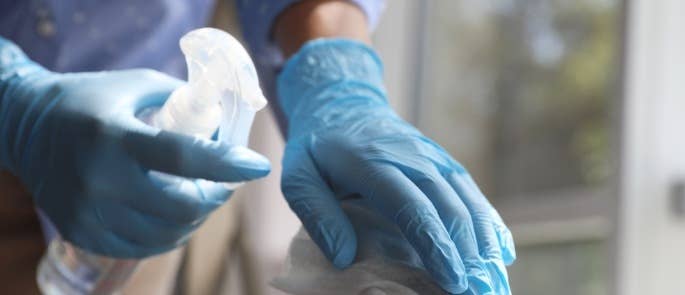
What Are High Touch Surfaces?
High touch surfaces are those that people frequently touch with their hands, which could therefore become easily contaminated with microorganisms and picked up by others on their hands. For example, door handles, light switches, and shared equipment.
Infections primarily spread via respiratory systems and being in close contact with others, but another common way is via our hands. They touch so many things throughout the day and can easily carry microorganisms, which could then infect you via routes of entry (such as if you use your hands to eat without washing them first).

UK Government guidance has emphasised the importance of disinfecting high touch areas to help prevent infections and viruses from spreading. This goes hand in hand with frequent and effective handwashing procedures.
What are Some Examples of High Touch Surfaces?
Whether you work in an office, school, restaurant, shop, hospital, or other type of business, there are many common high touch surfaces that you should be aware of. If you’re responsible for cleaning, these are the surfaces that you should focus on and that will most likely be set out in your cleaning schedule.
Examples of high touch surfaces include:
- Those in communal spaces, like door handles, stair railings, windows, bannisters, light switches, lifts, chairs in reception areas, changing rooms and showers, and staff lunch rooms (including tables and chairs).
- Surfaces in bathroom facilities, including toilets, flush handles, toilet roll and dispensers, hand dryers, and sinks.
- Work surfaces and equipment, such as desks, keyboards, printers, mice, phones, monitors, and storage cabinets.
- Shared kitchen appliances, such as kettles, fridges, microwaves, and cupboards.
- Surfaces in shared vehicles, including door handles, steering wheels, seat belts, gear sticks, indicators, and other internal surfaces.
- Shared equipment and tools, such as touch screens, card machines, control panels, delivery crates and boxes, and water coolers.
This isn’t an exhaustive list, but it covers some of the most common high touch surfaces that many workplaces have. Depending on the type of premises there may also be others, including areas specific to the industry. For example, the frames and rails of hospital beds. The employer or another competent person will consider specific areas in the risk assessment.
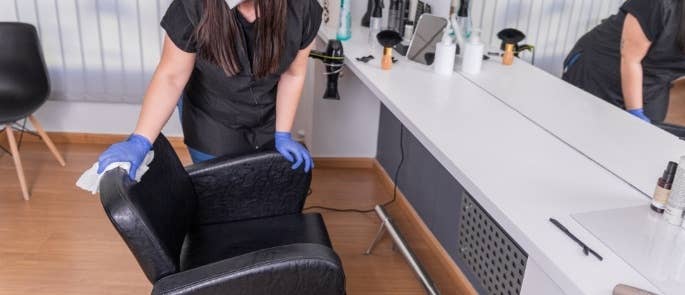
Cleaning all of these surfaces frequently is vital. People could touch them several times a day, unknowingly contaminating them or picking up infections that others have spread.
How Should I Clean and Disinfect High Touch Surfaces?
To effectively clean and disinfect high touch surfaces, it’s important to look at the recommendations from the UK Government and the NHS, particularly regarding what substances and techniques to use.
General cleaning for high touch surfaces
The recommendations for general cleaning of surfaces are as follows:
- Businesses can use their preferred cleaning products, provided these substances are the right type for killing the microorganisms that pose a risk in the workplace. You should always follow the manufacturer’s guidance on using these, to ensure they work properly and you keep yourself and others safe.
- Periodic cleaning should be planned for high touch surfaces. Ideally, all high touch surfaces should be wiped down twice a day. Your workplace may require more frequent cleaning intervals than these depending on how often different people may come into contact with them, which will be determined in the risk assessment. For example, door handles, stair banisters, and lift buttons may need cleaning several times a day.
- Deep cleaning should also be planned and carried out. As a minimum, high touch surfaces should undergo deep cleaning at least once a day.
Need COSHH Training?
Our COSHH Training for Cleaners provides those who carry out cleaning activities the information they need to understand the risks hazardous substances can pose and how these can be controlled.
To make this cleaning effective, particularly deep cleaning, there are some techniques and steps you should follow. This includes the six stages of cleaning and the NHS’s recommended cleaning methods, which ensure all contaminants and microorganisms are fully removed.

The six stages of cleaning are:
- Pre-clean, which involves removing debris and substances with a disposable towel, sweeping, or rinsing.
- Main clean, which involves using hot water and a detergent to loosen substances and dirt that couldn’t be removed during the pre-clean stage.
- Rinse, which involves removing the loosened substances and detergent with hot water.
- Disinfection, which involves destroying microorganisms with a chemical disinfectant or other method.
- Final rinse, which involves removing the disinfectant using clean, hot water (though this stage may not be carried out depending on the instructions of the disinfectant. For instance, if you can leave it to do its work and it doesn’t need rinsing afterwards).
- Drying, such as air drying after the final rinse stage. Anything used to manually dry should be single use, such as disposable towels.
The NHS’s recommended cleaning techniques are:
- Always work from the cleanest area towards the dirtiest area.
- Clean from the top to the bottom of the surface.
- Use an ‘S’ shaped pattern where possible when cleaning surfaces.
- Be careful not to go over the same area twice, as this may re-contaminate it.
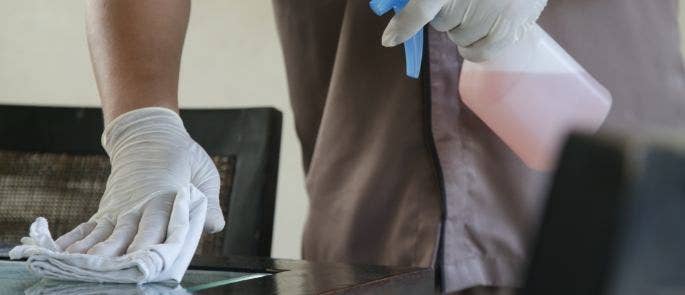
There are a lot of high touch surfaces in workplaces and even in the home, and it’s crucial that they undergo frequent, thorough cleaning. This will help to keep everyone healthy and safe, in and out of the workplace.
What to Read Next:
- The 7 Steps of Hand Washing – Free Poster
- Hand Hygiene: Myths and Facts
- Infection Prevention and Control (ICP) Training
- Hand Hygiene and Infection Control Quiz
- Risk Assessment for Cleaning: Free Template
- COSHH Training for Cleaners


